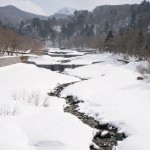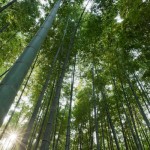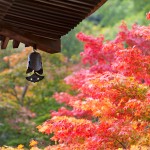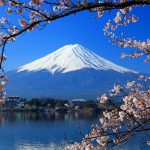Seasonal Sake
Shiboritate (Winter to Spring)
 Straight away after sake brewing, sake is bottledto preserve its best freshness. (Unpasteurised and undiluted) It is extremely fresh, wild and versatile, fruity and vibrant, refreshing, sweet and opulent. It is just like drinking the first rays of Spring itself.
Straight away after sake brewing, sake is bottledto preserve its best freshness. (Unpasteurised and undiluted) It is extremely fresh, wild and versatile, fruity and vibrant, refreshing, sweet and opulent. It is just like drinking the first rays of Spring itself.
Recommended Sakeware: Glass or Porcelain Guinomi with tulip shaped rim like Kaburaki Sakazuki to defuse alcohol and enjoy fresh nose, Nousaku Tin Sakeware to enhance coldness and acidity. Katakuchi, Glass or Nousaku Tin servers are particularly suitable for chilled sake service.
Arabashiri (Spring to Summer)
Arabashiri is the first cut of the sake press. There are three different cuts when you press sake, Arabashiri, Naka, and Seme, where Arabashiri is freshest and least astringent. Arabashiri is not the same as Shiboritate as Shiboritate tends to be a blend of all three cuts and the first sake of the year to be pressed. Arabashiri is the first cut of any sake pressed during the year, normally bottled unpasteurised and undiluted to keep its special character. It is similar to Shiboritate, fresh, wild and versatile, refreshingly sweet and opulent. It is a lovely sake to drink during Spring and Summer. Because it is unpasteurised, it needs to be refrigerated.
Recommended Sakeware: Glass or Porcelain Guinomi with tulip shaped rim like Kaburaki Sakazuki to defuse alcohol and enjoy fresh nose, Nousaku Tin Sakeware to enhance coldness and acidity. Katakuchi, Glass or Nousaku Tin servers are particularly suitable for chilled sake service.
Nama-Zake (Summer)
 Nama-Zake is an unpasteurised sake. Sake is pasteurised usually at least once during the sake production process, but some sakes are left unpasteurised to create a particular style. When sake is left unpasteurised, it has very fresh and lively character especially suitable for Summer season. Usually Nama-Zake needs to be refrigerated in order to keep its original style, otherwise it will develop further in the bottle not necessarily always in the better way.
Nama-Zake is an unpasteurised sake. Sake is pasteurised usually at least once during the sake production process, but some sakes are left unpasteurised to create a particular style. When sake is left unpasteurised, it has very fresh and lively character especially suitable for Summer season. Usually Nama-Zake needs to be refrigerated in order to keep its original style, otherwise it will develop further in the bottle not necessarily always in the better way.
Recommended Sakeware: Glass or Porcelain Guinomi with tulip shaped rim like Kaburaki Sakazuki to defuse alcohol and enjoy fresh nose, Nousaku Tin Sakeware to enhance coldness and acidity. Katakuchi, Glass or Nousaku Tin servers are particularly suitable for chilled sake service.
Hiyaorosi (Autumn to Winter)
 Hiyaoroshi is pasteurised once to stabilise sake after the brewing and matured over Summer. Whenthe temperature outside becomes about the same as the inside of the brewery, it is bottles without further pasteurisation and released. Due to the maturation over Summer, the mouthfeel is rounder and softer, deeper in flavour and smoother in texture. It goes very well with an Autumn feast with richer umami. Nagoshizake (Over the Summer) in September is rich but still fresh, Hiyaoroshi at this stage is to enjoy the resemblance of Summer just passed. Akidashi Ichiban Sake (First release in Autumn) in October is getting to its best balance between Umami and fragrance, you can enjoy Hiyaoroshi at this stage at room temperature or slightly warmer. It is all mighty in the ways you would like to enjoy it depending on your mood and occasion. Banshu Uma Zake (End of the Autumn matured) in November and the rest of Autumn and Winter is Hiyaoroshi at its richest stage in terms of Umami and texture. It will go well with the richest Japanese ingredients with soy sauce, Miso and salt. It will also match well with seasonal game, from grouse to wild boar and venison. With increasingly chilly weather, it will be wonderful to enjoy it warm in the morning or evening.
Hiyaoroshi is pasteurised once to stabilise sake after the brewing and matured over Summer. Whenthe temperature outside becomes about the same as the inside of the brewery, it is bottles without further pasteurisation and released. Due to the maturation over Summer, the mouthfeel is rounder and softer, deeper in flavour and smoother in texture. It goes very well with an Autumn feast with richer umami. Nagoshizake (Over the Summer) in September is rich but still fresh, Hiyaoroshi at this stage is to enjoy the resemblance of Summer just passed. Akidashi Ichiban Sake (First release in Autumn) in October is getting to its best balance between Umami and fragrance, you can enjoy Hiyaoroshi at this stage at room temperature or slightly warmer. It is all mighty in the ways you would like to enjoy it depending on your mood and occasion. Banshu Uma Zake (End of the Autumn matured) in November and the rest of Autumn and Winter is Hiyaoroshi at its richest stage in terms of Umami and texture. It will go well with the richest Japanese ingredients with soy sauce, Miso and salt. It will also match well with seasonal game, from grouse to wild boar and venison. With increasingly chilly weather, it will be wonderful to enjoy it warm in the morning or evening.
Recommended Sakeware: Earthenware and Wooden Guinomi like Shigaraki or Yamanaka, Tokkuri servers for warm sake


